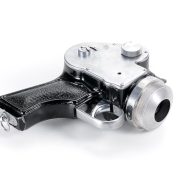Computer-Aided Design (CAD) is a vital tool across multiple industries, helping professionals create precise technical drawings, models, and simulations. Whether you’re designing mechanical components, buildings, or consumer products, CAD skills open the door to a variety of high-demand careers.
This guide explores jobs involving CAD, the industries hiring CAD professionals, and the skills you need to succeed.
What Is CAD and Why Is It Important?
CAD refers to the use of computer software to design and document physical products and structures. It replaces manual drafting with digital tools, offering greater accuracy, faster revisions, and 3D visualization.
Industries rely on CAD for:
- Precision engineering
- Product prototyping
- Construction planning
- Simulation and analysis
Top Jobs Involving CAD
Mechanical Drafter
Role: Creates detailed drawings for machinery and mechanical devices.
Industries: Manufacturing, automotive, aerospace.
Skills Needed: SolidWorks, AutoCAD Mechanical, understanding of mechanical principles.
Architectural Drafter
Role: Produces technical drawings for residential, commercial, or industrial buildings.
Industries: Architecture, real estate development, construction.
Skills Needed: AutoCAD Architecture, Revit, building codes knowledge.
Civil Engineering Technician
Role: Assists in designing infrastructure projects such as roads, bridges, and water systems.
Industries: Civil engineering, urban planning, public works.
Skills Needed: Civil 3D, surveying knowledge, GIS integration.
Electrical Drafter
Role: Prepares wiring diagrams and layout plans for electrical systems.
Industries: Power generation, electronics manufacturing, telecommunications.
Skills Needed: AutoCAD Electrical, electrical schematics, safety codes.
CAD Designer for Product Development
Role: Designs consumer products, from furniture to electronics.
Industries: Consumer goods, industrial design, medical devices.
Skills Needed: Fusion 360, CATIA, creative design thinking.
Aerospace CAD Technician
Role: Creates components and assemblies for aircraft and spacecraft.
Industries: Aviation, aerospace engineering, defense.
Skills Needed: CATIA, NX, aerodynamics knowledge.
Interior Designer (CAD Specialist)
Role: Uses CAD to visualize layouts, furniture placement, and lighting.
Industries: Interior design firms, hospitality, retail.
Skills Needed: SketchUp, AutoCAD, 3D rendering software.
Industries Hiring CAD Professionals
- Manufacturing – Machine parts, automotive, robotics.
- Architecture & Construction – Buildings, urban planning.
- Aerospace & Defense – Aircraft and spacecraft design.
- Electronics & Electrical – Circuit boards, wiring layouts.
- Consumer Products – Appliances, furniture, packaging.
Skills Needed for Jobs Involving CAD
- Software Proficiency: AutoCAD, SolidWorks, Revit, CATIA, Fusion 360.
- Technical Drawing: Ability to create detailed and accurate schematics.
- 3D Modeling: Turning ideas into visual prototypes.
- Attention to Detail: Ensuring precision in dimensions and specifications.
- Industry Knowledge: Understanding relevant engineering or architectural standards.
Salary Expectations for CAD Jobs
Salaries vary based on role, industry, and location:
- Entry-Level CAD Technician: $40,000–$55,000/year
- Mid-Level Drafter or Designer: $55,000–$75,000/year
- Senior CAD Engineer or Specialist: $80,000–$100,000+ per year
Specialized fields like aerospace and oil & gas often pay at the higher end of the scale.
Certifications and Training
- Autodesk Certified Professional (ACP)
- Certified SolidWorks Professional (CSWP)
- Revit Architecture Certification
- CATIA Certification
These credentials can improve hiring chances and salary potential.
Tips for Getting a Job Involving CAD
- Build a Strong Portfolio – Include projects showcasing different design skills.
- Stay Updated on Software – Employers prefer candidates with current software knowledge.
- Network in Your Industry – Join engineering, architecture, or design associations.
- Gain Hands-On Experience – Internships and freelance projects help demonstrate skills.
Conclusion
Jobs involving CAD offer diverse opportunities across industries like manufacturing, architecture, aerospace, and product design. With the right mix of technical skills, software expertise, and industry knowledge, CAD professionals can enjoy rewarding careers with strong earning potential.
As technology advances, CAD specialists will remain crucial in bringing innovative designs and engineering projects to life—making it a smart career choice for the future.
FAQs
1. Do CAD jobs require a degree?
Not always—many employers accept vocational training and certifications if you have strong skills.
2. Which CAD software is most in demand?
AutoCAD, SolidWorks, and Revit are widely requested by employers.
3. Can CAD jobs be remote?
Yes—many drafting and design roles can be done remotely, especially in product design and architecture.
4. How long does it take to learn CAD?
Basic proficiency can be achieved in 3–6 months; mastery takes 1–2 years with consistent practice.
5. Is CAD a good career choice?
Yes—CAD skills are in demand across industries, offering stable employment and growth potential.
Also read: New 14-Hour Rule for Truck Drivers: What You Need to Know









